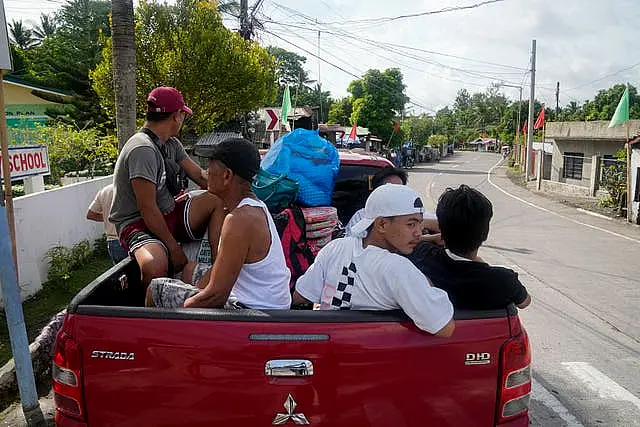Thousands of people who fled their homes in the central Philippines to escape a volcano now have to contend with another threat: monsoon rains that could be unleashed by an approaching typhoon.
More than 6,000 villagers have been forced to leave rural communities within a 3.7-mile radius of Mayon volcano’s crater in north-eastern Albay province.
Thousands more may also need to be moved to safety from the permanent danger zone, officials said.
Others living outside the perimeter have packed their bags and voluntarily left with their children for evacuation centres in Albay, which was placed under a state of calamity to allow more rapid disbursement of emergency funds in case a major eruption unfolds.

Authorities raised the alert level for the volcano on Thursday after superheated streams of gas, debris and rocks cascaded down its upper slope, indicating activity below the surface that could precede a hazardous eruption within days or weeks.
A key tourist draw for its picturesque conical shape, the 8,077ft Mayon is one of the country’s most active volcanoes. It last erupted violently in 2018, displacing tens of thousands of villagers.
Authorities warned that Typhoon Guchol, which is approaching the Philippines from the Pacific but is projected to skirt the archipelago, may still dump heavy rains — unwelcome news for those living on Mayon’s slopes.
A loudspeaker alert in the community of low-slung rural houses and narrow dirt alleys has warned people to prepare to evacuate any time if the situation worsens. In the overcast sky above them, the volcano was hidden by thick rainclouds.

Village leader Dennis Bon has said he would not risk waiting until the last minute.
“We have children, persons with disabilities and elderly residents here,” Mr Bon said, before he drove off.
Albay governor Edcel Greco Lagman and welfare secretary Rex Gatchalian said they were prepared if monsoon rains triggered mudflows and rockfalls.
“We will still make sure that we will have no casualties from any compounded calamities,” Mr agman said.
The Philippines lies along the Pacific “Ring of Fire”, the area around the ocean rim where tectonic plates meet that is prone to earthquakes and volcanic eruptions.
A long-dormant volcano, Mount Pinatubo, blew its top north of Manila in 1991 in one of the biggest volcanic eruptions of the 20th century, killing hundreds of people.







